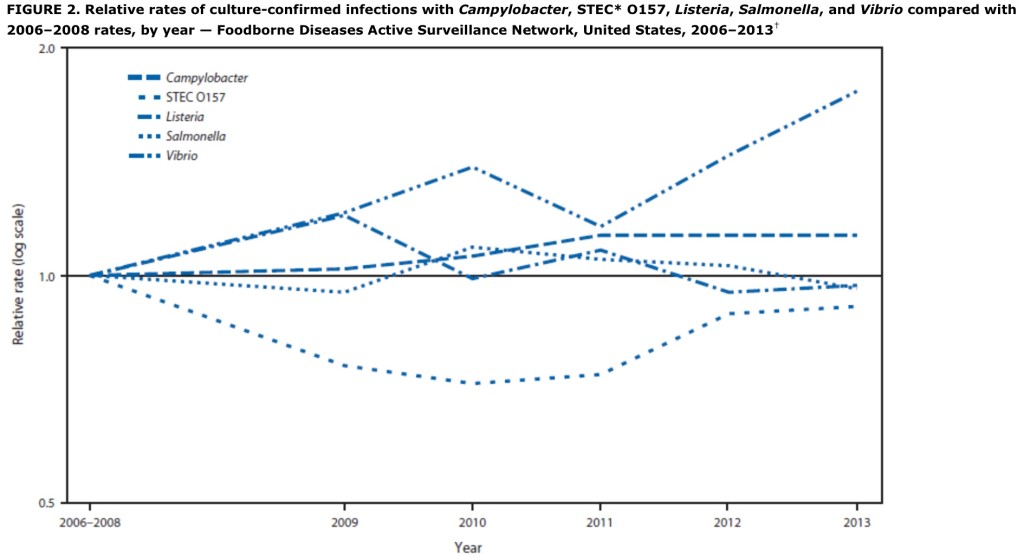That’s the tagline from a Far Side cartoon and what immediately came to mind upon reading yet again that reductions in foodborne illness were stagnant for 2013.
There were successes, failures and shifting profiles of what foods lead to foodborne illness, because whatever Americans choose to eat, under whatever production system, some smart bug is going to figure out how to flourish.
And the FoodNet data remains the best and most publicly available surveillance data in the world; that’s right, best in the world.
The Foodborne Diseases Active Surveillance Network (FoodNet) monitors the incidence of laboratory-confirmed infections caused by nine pathogens transmitted commonly through food in 10 U.S. sites, covering approximately 15% of the U.S. population. This report summarizes preliminary 2013 data and describes trends since 2006. In 2013, a total of 19,056 infections, 4,200 hospitalizations, and 80 deaths were reported. For most infections, incidence was well above national Healthy People 2020 incidence targets and highest among children aged <5 years. Compared with 2010–2012, the estimated incidence of infection in 2013 was lower for Salmonella, higher for Vibrio, and unchanged overall. Since 2006–2008, the overall incidence has not changed significantly. More needs to be done.
Yes, more needs to be done. Part of that involves abandoning archaic communications and invoking current, compelling and credible food safety messages using a variety of media, at the places where people make food decisions – whether it’s the local market or the megalomart.
 The complete report is available at http://www.cdc.gov/mmwr/preview/mmwrhtml/mm6315a3.htm?s_cid=mm6315a3_e
The complete report is available at http://www.cdc.gov/mmwr/preview/mmwrhtml/mm6315a3.htm?s_cid=mm6315a3_e
Incidence and trends of infection with pathogens transmitted commonly through food — Foodborne Diseases Active Surveillance Network, 10 U.S. sites, 2006–2013.
CDC MMWR 63(15);328-332
Stacy M. Crim, Martha Iwamoto, Jennifer Y. Huang, Patricia M. Griffin, Debra Gilliss, Alicia B. Cronquist, Matthew Cartter, Melissa Tobin-D’Angelo, David Blythe, Kirk Smith, Sarah Lathrop, Shelley Zansky, Paul R. Cieslak, John Dunn, Kristin G. Holt, Susan Lance, Robert Tauxe, Olga L. Henao


.jpg) health objective target of ≤1 case per 100,000.
health objective target of ≤1 case per 100,000. Amy wasn’t taking advantage of our full deductions, so I pompously declared I would do the taxes this year – my first time filing in the U.S. – and then of course waited until the last day to file.
Amy wasn’t taking advantage of our full deductions, so I pompously declared I would do the taxes this year – my first time filing in the U.S. – and then of course waited until the last day to file. Douglas Powell, an associate professor of food safety at Kansas State University, says that more training, testing and inspecting is not the answer.
Douglas Powell, an associate professor of food safety at Kansas State University, says that more training, testing and inspecting is not the answer..jpg) "There’s just way too many sick people," said Dr. Douglas Powell, an associate professor and scientific director of the
"There’s just way too many sick people," said Dr. Douglas Powell, an associate professor and scientific director of the